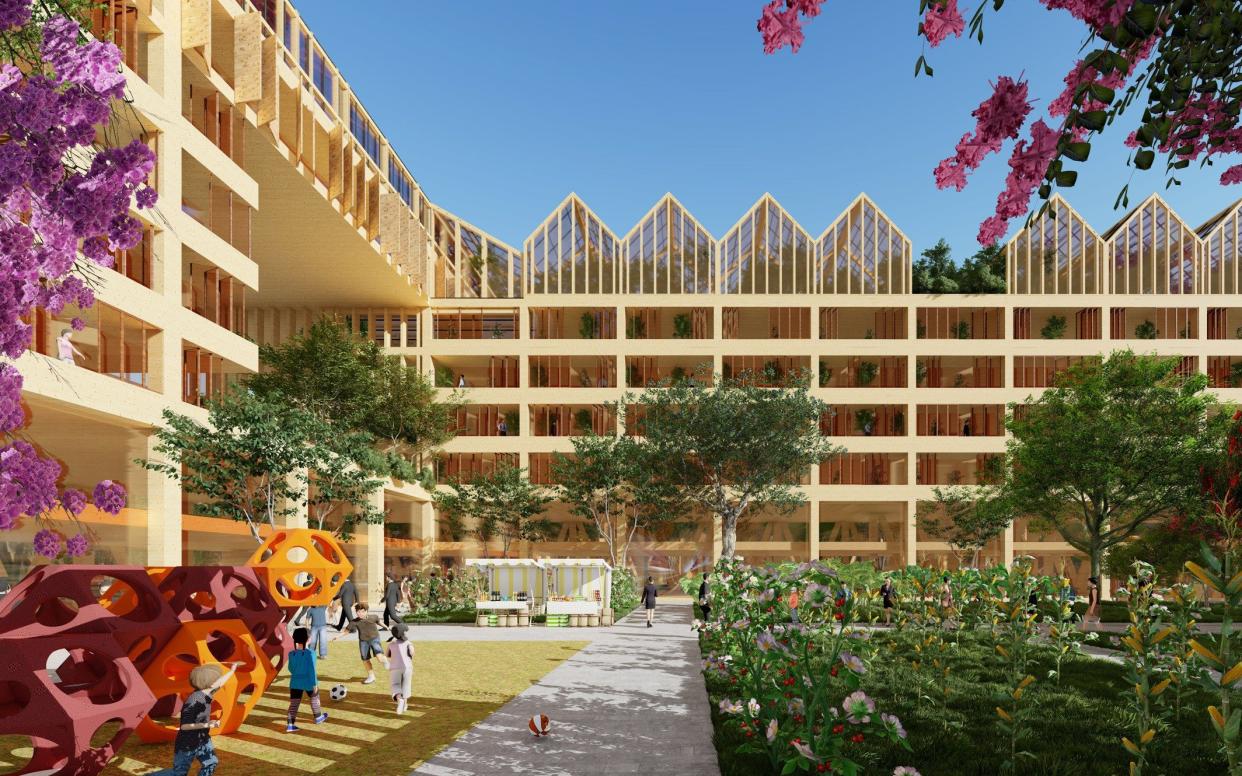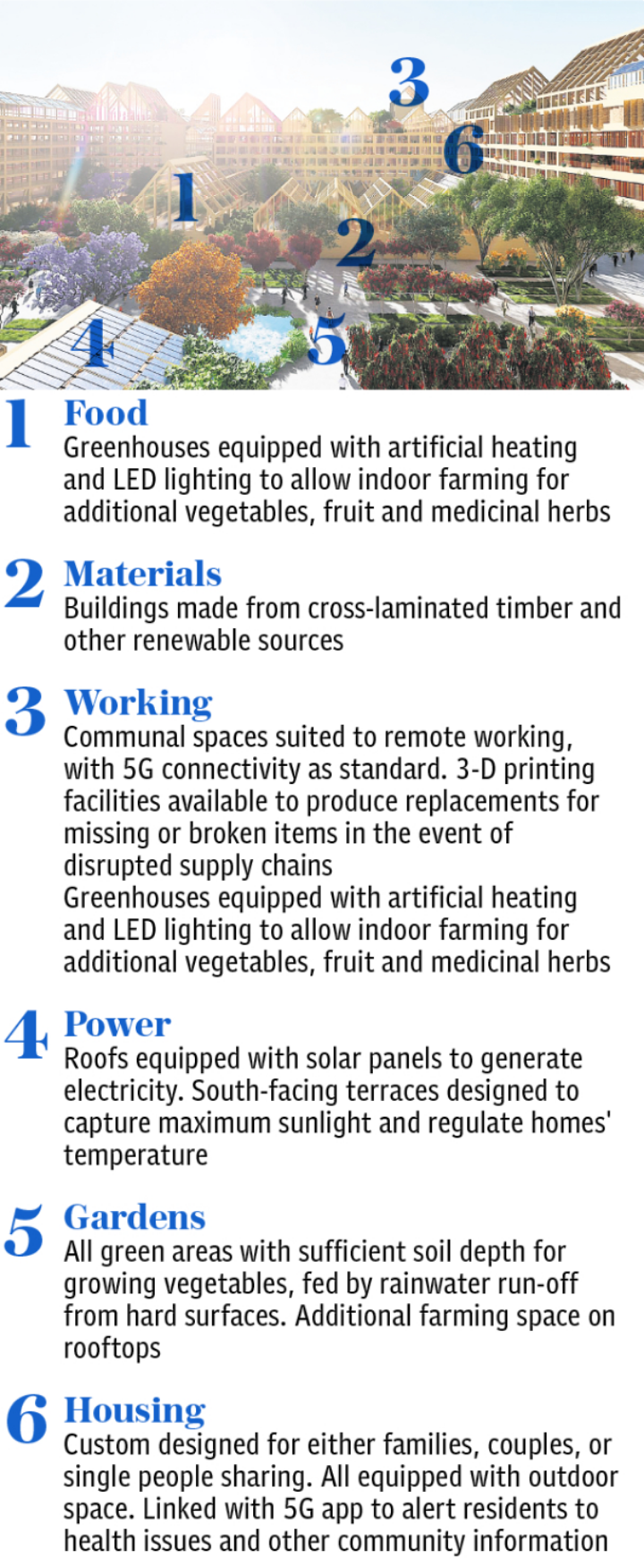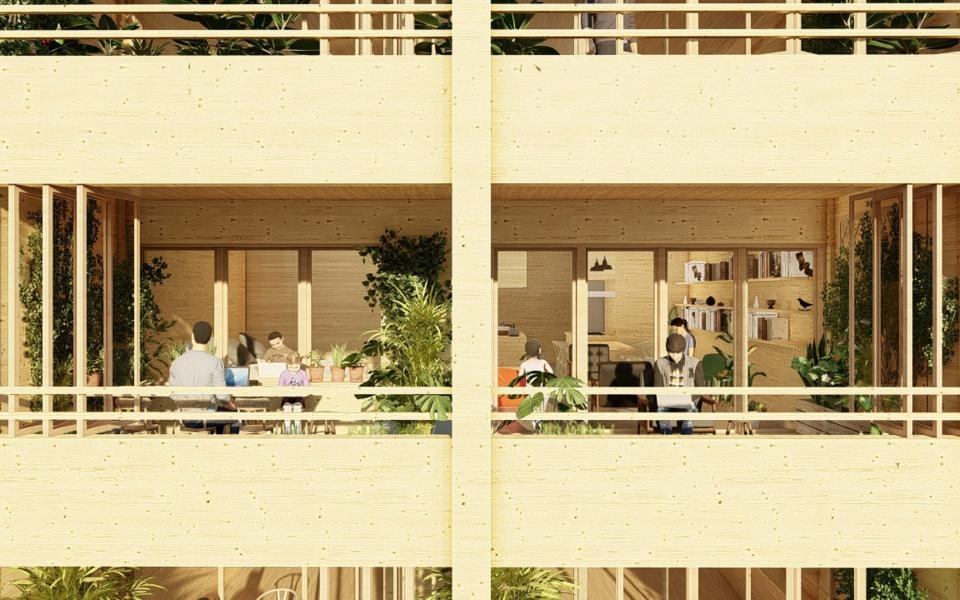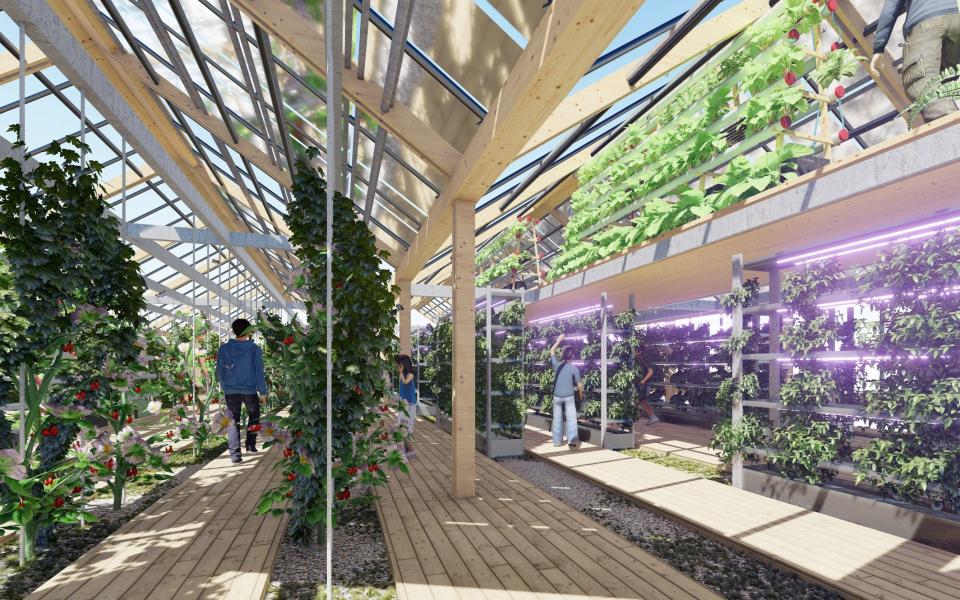Inside China's new 'Covid-proof' city


A new "smart city" in China is to have a state-of-the-art neighbourhood designed to cope with a future pandemic outbreak.
Architects working on Xiong'an, a flagship new metropolis outside Beijing, have been commissioned to make blocks of apartments specially equipped to allow residents to continue to function under lockdown conditions.
Each flat comes with a large balcony to allow access to the outdoors, and communal work areas big enough to maintain social distancing. Vegetable gardens, greenhouses and rooftop solar power will help residents maintain self-sufficiency in the event of large-scale disruptions to food chains and electricity supplies.
Past pandemics have played a major role in urban design. The cholera outbreaks of the 1800s, for example, where infected water lay in haphazard, umpaved alleyways, influenced the grid-design system of modern American cities, whose neat, simple layout also made water piping simpler.
The Chinese project is the brainchild of Barcelona-based Guallart Architects, which claims the neighbourhood will mark the start of a new style in post-Covid urban design, in which residents can thrive "even in moments of confinement".
"We cannot continue designing cities and buildings as if nothing had happened," said founder Vicente Guallart. "Our proposal stems from the need to provide solutions to the various crises that are taking place, in order to create a new urban life based in the circular bio-economy."

Championed personally by Chinese president Xi Jinping, the city of Xiong'an is being built to relieve pressure on Beijing, and will enjoy high-speed rail links and 5G broadband. The pandemic-proof neighbourhood consists of blocks designed for entirely integrated living and working during an epidemic.
As well as flats for both families, OAPs and single people, there will be offices, shops, a kindergarten, swimming pool and a fire station. The gardens will all be equipped with sufficient soil to grow vegetables in during emergencies, and there will be space for additional "farming" areas on the rooftops.

Greenhouses with hydroponic heating and LED lighting will prove the option for herb gardens from which medicines can be made. Inside the shared work spaces, 3-D printers will be on hand to manufacture 3-D replacements for missing or broken items in the event of disrupted supply chains.
While cars will be allowed in certain areas, some streets will be for pedestrians and cyclists only, with public transport and electric taxis included to help people reduce their reliance on personal vehicles. Drones will be used for deliveries to free up the roads, while a special "neighbourhood app" will send residents alerts about lockdowns and other health information.

The bidding to design the neighbourhood for the Xiong'an project was held when employees of Guallart Architects were in lockdown in Spain, which influenced the design heavily, Mr Guallart told the Thomson Reuters Foundation.
"We wanted to make a manifesto of those things that we thought were important during lockdown and in the future," he said. "If homes allow tele-work and tele-education, have flexible spaces on large terraces, and cities can grow food on the roofs or print objects in their neighbourhoods, we will be more prepared for the crises of the future."
Up to $500 billion is expected to be invested in the creation of Xiong'an over coming years. President Xi hopes that most of its industry will be cutting edge technology firms, making the future city a would-be rival to California's Silicon Valley.


